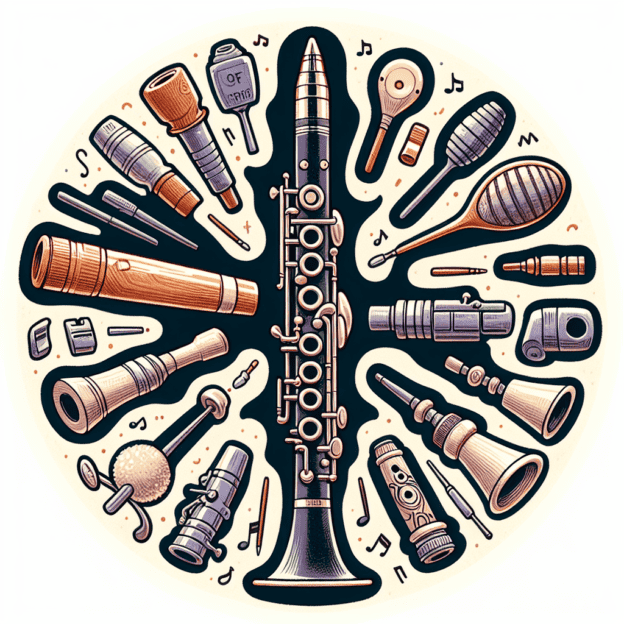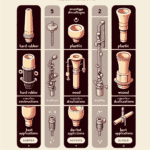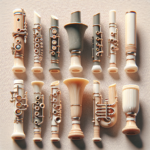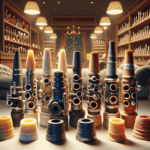Clarinet players know that every part of their instrument affects their performance, and the mouthpiece is no exception. The material of your clarinet mouthpiece plays a big role in shaping your tone, responsiveness, and overall playing experience. Professional clarinetists often try different materials to find their perfect match. Let's explore the common materials used for clarinet mouthpieces, what makes them unique, and how to pick the right one for you.
1. Hard Rubber (Ebonite)
Hard rubber, also known as ebonite, is a long-time favorite among clarinetists. Its strength and consistency make it a top pick for many professional players.
- Pros:
- Creates a warm, rich tone that's perfect for orchestra playing.
- Tough and long-lasting.
- Comes in many designs and facings, so you can find one that suits you.
- Cons:
- Might be heavier than other options, which could affect how you hold your instrument.
- Some players find it takes a while to “break in” compared to other materials.
2. Plastic
Plastic mouthpieces are budget-friendly and popular with beginners. However, many professionals also like them for their special qualities.
- Pros:
- Affordable and easy to find.
- Light and comfortable to play.
- Usually easier for beginners to play, as they're more forgiving.
- Cons:
- Often produces a simpler tone compared to hard rubber or wood.
- Might wear out faster and need to be replaced more often.
| Material | Tone Quality | Durability | Cost | Best For |
|---|---|---|---|---|
| Hard Rubber | Warm, rich | Excellent | Moderate | All-round use |
| Plastic | Bright, clear | Good | Low | Beginners |
| Wood | Complex, warm | Fair | High | Classical |
| Metal | Bright, powerful | Excellent | High | Jazz |
| Hybrid | Varied | Good | High | Versatile players |
3. Wood
Wooden mouthpieces aren't as common, but they've been getting more attention lately because of their special sound quality.
- Pros:
- Produces a warm, complex sound that many musicians love.
- Can help with precise articulation and subtle playing.
- Cons:
- Might not last as long as hard rubber or plastic, especially in damp conditions.
- Needs more frequent care to keep it playing well.
4. Metal
Metal mouthpieces are mostly used in jazz, where players want bright, sharp sounds that stand out.
- Pros:
- Creates a bright, strong tone that cuts through in group performances.
- Very durable and usually handles temperature changes well.
- Cons:
- Can be heavy and might need adjusting for comfort.
- Some players find it hard to control the volume.
5. Hybrid Mouthpieces
Hybrid mouthpieces mix materials like rubber and metal, trying to offer the best features of both.
- Pros:
- Offers a range of sound qualities and playing experiences.
- Can balance warmth and brightness in the tone.
- Cons:
- Often costs more than mouthpieces made from a single material.
- How well it works can vary a lot depending on how it's made.
Choosing the Right Mouthpiece Material
When you're picking a mouthpiece, think about these things:
- What kind of music do you play? Classical, jazz, or something else?
- How experienced are you? Beginners might prefer plastic or hard rubber, while pros might try wood or metal.
- What kind of sound do you want? Different materials will change your overall sound.
- Try out different mouthpieces to see what feels best. What's great for one player might not work for another.
In the end, choosing the best mouthpiece for your clarinet is a personal choice. It depends on what you need for your performances and what sound you like best. Each material has its own special qualities, so it's worth trying them out to see what helps you play and sound your best.
Table of Contents
- 1. Hard Rubber (Ebonite)
- 2. Plastic
- 3. Wood
- 4. Metal
- 5. Hybrid Mouthpieces
- Choosing the Right Mouthpiece Material








